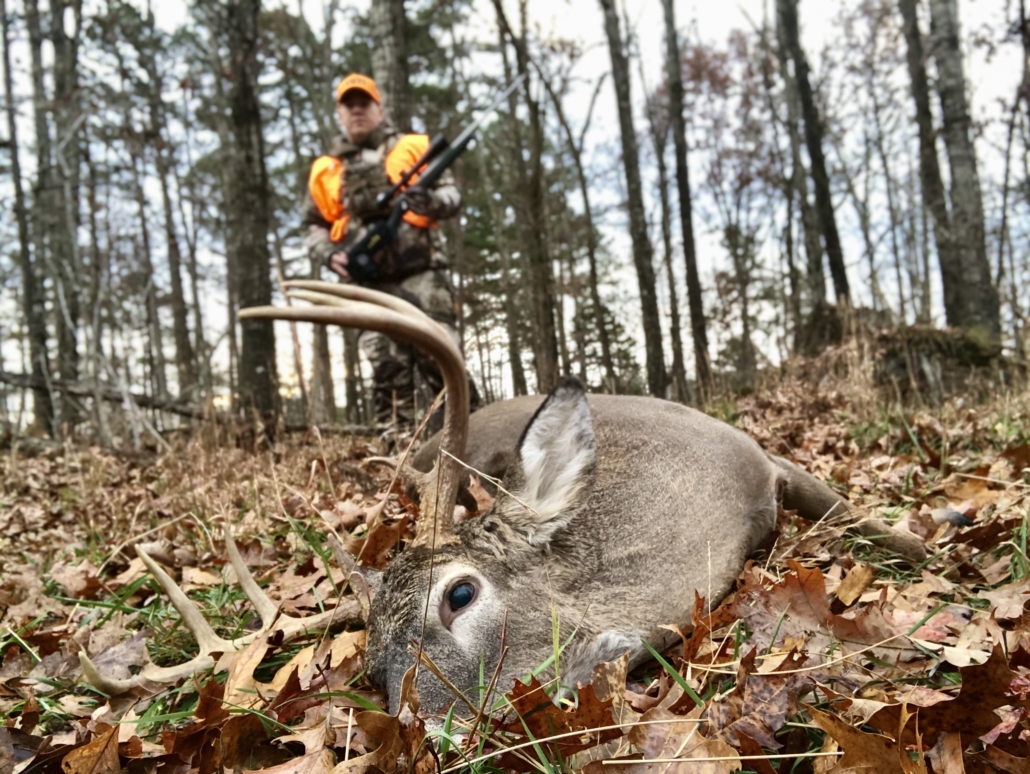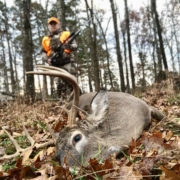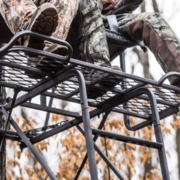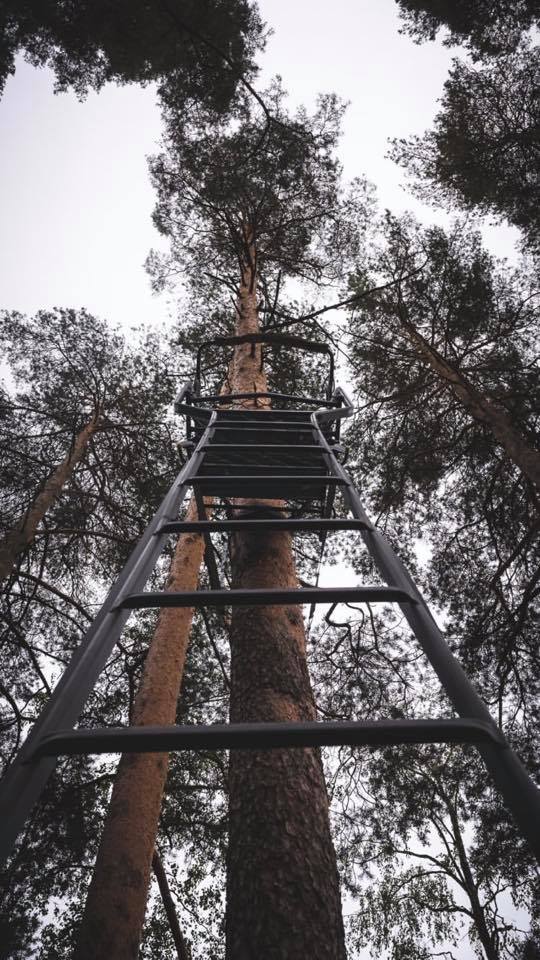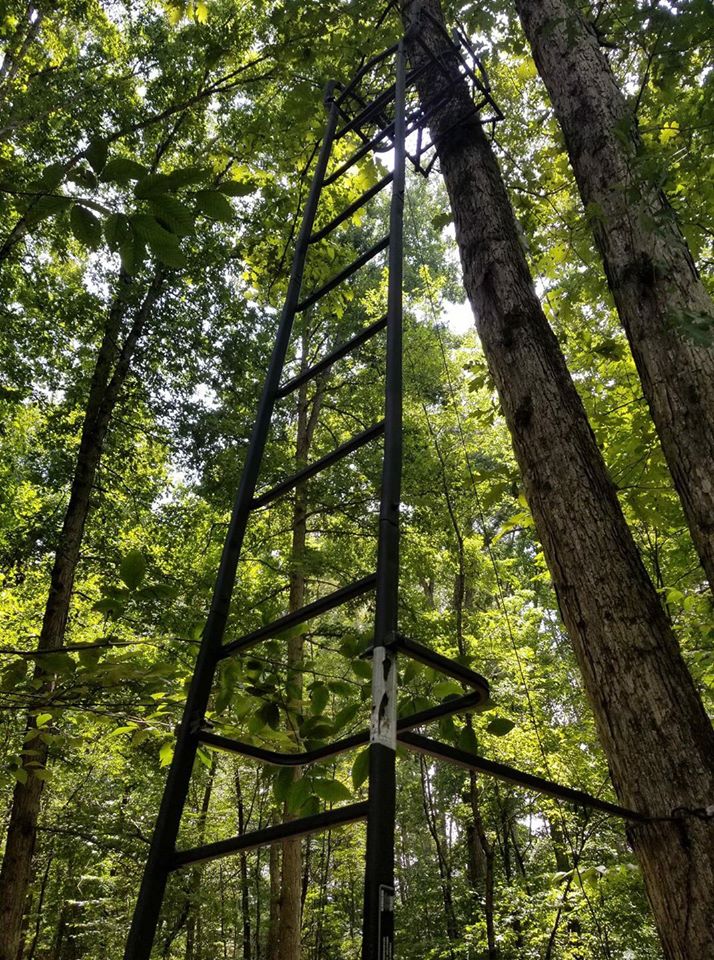All Day Sits Pay Off During The Rut
By: Heath Wood
The Power of Patience
After a mid-November morning of bucks cruising, chasing, and multiple encounters with deer the entire hunt, I was eager to see what the rest of the day had in store. At 11:30 a.m., a good friend who hunts in a tree stand nearby texted me and asked if I would like to join him for a quick bite to eat. He told me that he parked on the backside of the property where we both were hunting. The morning’s hunt was full of action; however, my stomach was empty.
After a short drive to meet up with my friend, I was welcomed with a bag full of elk snack sticks, sliced cheese, and crackers laid out on the bed of his truck, like that of a buffet. I stuffed my face with snacks and then headed back to my tree stand to settle for the afternoon and evening hunt. I was amazed at how many deer I witnessed moving through the timber during the early afternoon. At a time of day when I would typically be sitting at camp or home, the deer were already on their feet.
At 2:00 p.m. that afternoon, I was fortunate to harvest a mature buck who was cruising through trying to find any does that were in estrus. If it weren’t for sitting all day, I would not have been there when he came through, or even more concerning, I would probably have spooked the buck when walking in if I had been following my usual hunting schedule.
Plan for Comfort
When hunting mid-November or when the rut is in full swing, it is a good idea to take your playbook or your game plan and throw it away. One of the most exciting things about hunting the rut is that you never know what the deer will be doing or where they will be. The unpredictable nature of bucks during the rut is why it is crucial to find a spot that you know deer usually travel and sit all day. To sit all day, one must be ready to endure ten or more hours in a ladder stand, tree stand or blind. When sitting for long periods, you must consider these three factors—comfort, hunger, and boredom.
Remaining comfortable throughout the day means to have an excellent place to sit and to stay warm. During the rut is one of my favorite times to put in an entire day of hunting. Whether rifle hunting or bow hunting, I prefer using a ladder stand with enough room to sit to ensure I stay comfortable. The 20′ Big Denali 1.5 Man SLS Ladderstand from Hawk is one of my favorite ladder stands. The Big Denali features one of the most oversized seats ever on a ladder stand. The Mesh Comfort seat is 26″ wide and has a 23″ contour backrest. The extra room in the seat and the large area to rest my feet, I can sit comfortably for hours.
The other critical factor in sitting comfortably for an extended period is dressing in layers to adjust to the weather. By dressing in layers, you guarantee that you will be warm in the mornings when it is colder. As the day progresses and temperatures begin to climb, you can shed a layer and remain comfortable without leaving the ladder stand.
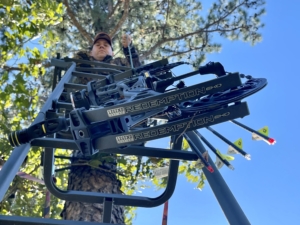
Hunters Get Hungry
Hunger can end a hunt faster than you can say biscuits and gravy. It is a good idea to take a few snacks in your backpack to prevent cutting your hunt short and risk being absent from the stand when a mature buck decides to venture through. On a cool fall morning, while sitting in a ladder stand or tree stand, it is common to start feeling hunger pangs after the morning action slows down. This is especially true during the rut; you never know when the moment of truth will present itself. I take a few snacks and drinks with me in my bag to help keep myself in the stand when the action happens.
In the past, I have even packed my lunch to avoid leaving the area. However, I usually keep my lunch in my vehicle, and I get out of my stand during mid-day, only to eat, then climb back into the stand as soon as possible.
Boredom Saves the Buck
The last of the three risk factors for cutting a hunt short is boredom. During the rut, there is usually a lot of action throughout the day. However, there will still be times when nothing is going on. It is easy to let your mind wander during such times. A cell phone is a lifesaver for a roaming mind. When activity slows, grab your phone, check social media, play games, check the weather, or whatever to occupy your mind to prevent boredom. If you are not much of a smartphone kind of person, I use my hunting accessories as tools to prevent boredom. When hunting during the rut, using a grunt call or rattling antlers can sometimes help lure in a buck. They can also be used when times get slow, and you become bored.
A Good Backpack Leads To Good Results
You want to speed up the action anyway, why not make a few grunts or compose a rattling sequence. Other hunting accessories are used the same way. Hunters often carry a backpack or bag such as the Tenzing/Mossy Oak Bottomland Hangtime Day Pack. A hunt backpack like the Hangtime Day Pack keeps all gear, snacks, drinks, and anything else you might need during the hunt always organized and within reach. When times get slow, I get my Vortex Viper HD binoculars out of my pack and slowly scan my entire surroundings. Occasionally when scanning with binoculars, you will spot deer movement that you may have failed to notice with the naked eye.
The rut is a favorite time of the year for all deer hunters. The action is like no other time of the year, and the chance of taking mature buck increases. Do not miss out on this magical time by being absent when it occurs.
